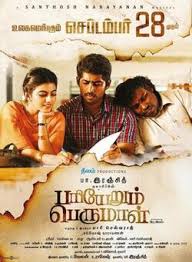Understanding ‘Pariyerum Perumal’: A Turning Point in Tamil Cinema

Introduction
‘Pariyerum Perumal,’ directed by Mari Selvaraj, has emerged as a significant landmark in Tamil cinema since its release in September 2018. This film does not just tell a story; it offers a critical lens on caste dynamics and societal hierarchies, making it highly relevant in the context of ongoing discussions about social justice in India.
Plot Overview
The film follows the journey of an engineering student named Pari, portrayed by Kathir, who hails from a marginalized community. He faces various challenges stemming from the deeply entrenched caste system, particularly when he falls in love with a girl from an upper caste (played by Anandhi). Through its narrative, the film poignantly illustrates the societal prejudices and struggles faced by those in lower castes, presenting a raw yet powerful commentary on contemporary Indian society.
Cultural Impact
‘Pariyerum Perumal’ has sparked dialogues on caste discrimination in Tamil Nadu and beyond, resonating with audiences who identify with its themes of injustice and aspiration. Critics have praised the film’s screenplay and direction, particularly its ability to blend social commentary with mainstream entertainment. The movie has not only garnered significant box office success but has also won several awards, including the National Film Award for Best Feature Film.
Reception and Legacy
The film’s release was met with widespread acclaim, not only for its narrative but also for its performances, cinematography, and hauntingly beautiful soundtrack by Santhosh Narayanan. Its portrayal of the harsh realities faced by those from marginalized backgrounds brought it international attention, highlighting the need for greater dialogue about caste and class in India.
Conclusion
‘Pariyerum Perumal’ stands as a poignant reminder of the struggles surrounding caste inequities that persist in Indian society today. As conversations about social justice and equality continue to evolve, this film remains a crucial cultural reference point. Looking forward, it emphasizes the significance of cinema as a medium for social change, urging viewers to reflect on their perceptions and the structures around them. The film invites audiences to engage actively with these pressing societal issues, making it a timeless piece of art within Tamil cinema.







